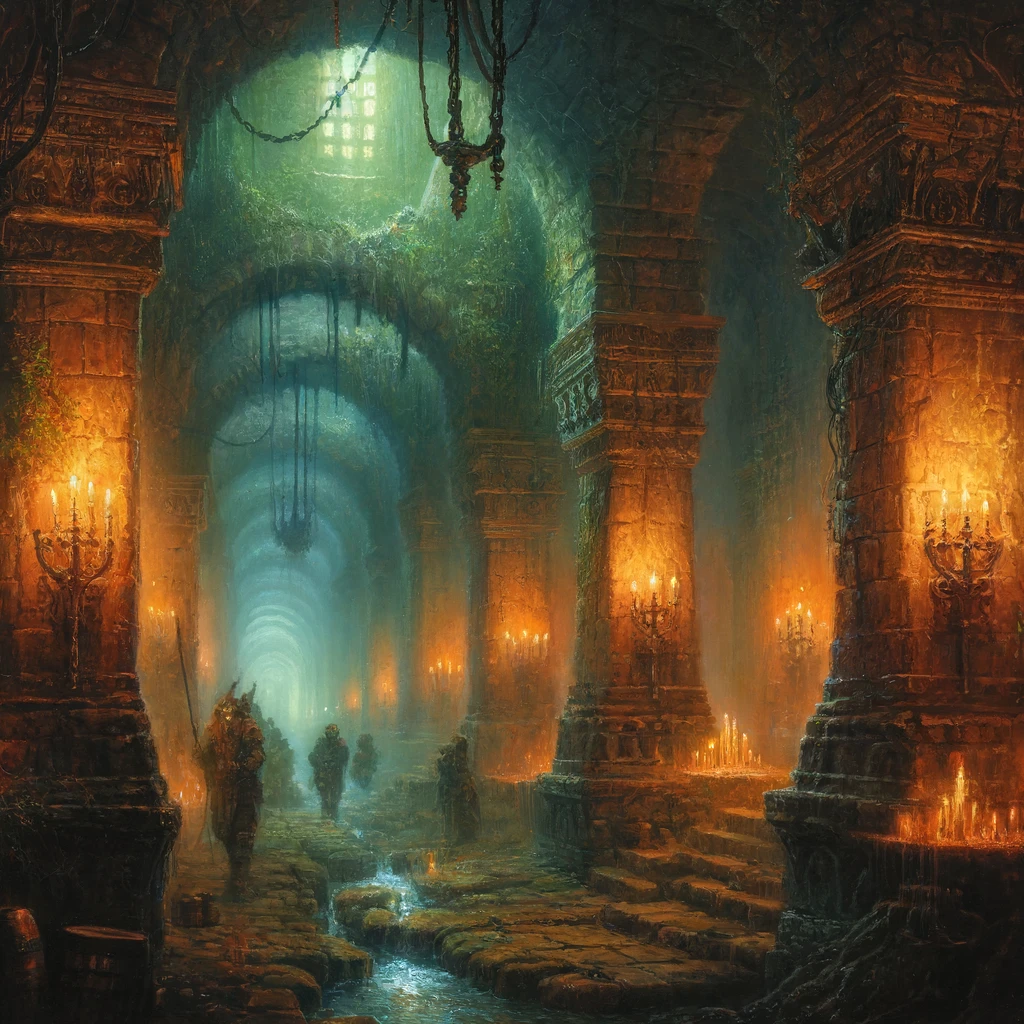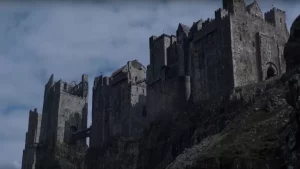
In the realm of fantasy role-playing games, the allure often lies in the unexpected twists and the shroud of mystery enveloping each quest. Veteran players and game masters alike may find that the challenge diminishes when the element of surprise is lost. Familiarity with the creatures and scenarios can turn the mystical into the mundane unless the game master injects a dose of creativity.
To counter this, game masters can deepen the narrative by intertwining personal backstories of characters with the main plot. This not only personalizes the adventure but also opens avenues for unexpected developments that can catch even the most experienced players off guard. For instance, a character's long-lost sibling might emerge as a key antagonist, or a seemingly minor artifact from a player's past could turn out to be the linchpin in a high-stakes political intrigue.
Moreover, integrating dynamic environments that change in real-time with the players' actions adds another layer of unpredictability. A forest that grows denser and more threatening as players solve its mysteries, or a city that reacts to their political alliances and choices, can significantly alter the course of the game. These evolving settings ensure that no two playthroughs are the same, constantly challenging players and rewarding creative problem-solving and adaptation.
Imagine delving into a dungeon, the air thick with the musty smell of decay. Cobwebs brush against your face, and odd, dark stains mark the walls, hinting at untold stories of past adventurers. The atmosphere is heavy with a silence that's punctuated only by distant, eerie sounds-perhaps the mournful wail of the wind, or the faint echoes of a distant scream. This contrast between silence and sudden noise enhances the tension, making every decision feel significant.
As you progress deeper into the shadows, the walls seem to close in, and the temperature drops, sending shivers down your spine. Your only light flickers, casting long, menacing shadows that twist and turn with your movements, as if alive. Each step is met with the crunch of debris underfoot, the nature of which you dare not inspect too closely. The dungeon feels alive, breathing and watching your every move, adding a psychological layer to the physical challenges of navigating the treacherous paths.
Suddenly, a soft, sinister giggle echoes through the corridors, sourceless and chilling, heightening the eerie suspense. It's unclear whether this is a trick of the mind or another adventurer's echo lost in these ancient halls. This auditory hallucination compels the party to halt, debating whether to seek out this new mystery or to continue towards their original goal, showcasing how sensory experiences in a game can dramatically shape players' strategies and emotional responses.
To reintroduce uncertainty and fear, consider implementing auditory misdirection. Random sounds like drumbeats, distant shouts, or the unmistakable tramp of orcish feet might signal danger, but their true source is often elusive. Introduce a mechanic where every half hour, there is a 25% chance that players will hear such noises. These sounds might lead to a dead end, cleverly disguised traps, or simply cease once pursued, keeping players on their toes and heightening the sense of adventure.
Expanding on this idea, game masters can craft complex soundscapes that evolve with the storyline. For instance, as players delve deeper into a haunted crypt, they might begin to hear faint whispers or the clinking of chains. These auditory elements can be tied to specific areas of the map, creating a sensory puzzle that players must solve to uncover hidden rooms or secret passages. Such design encourages a more strategic approach to exploration, rewarding careful listening and teamwork among players.
Additionally, introducing a system where the consequences of following these sounds can vary dramatically can add layers of strategy and risk. Imagine a scenario where following a series of ghostly whispers might lead players into an ambush, but could also guide them to a cache of forgotten treasure. By varying the outcomes, game masters ensure that players remain engaged and that the auditory cues themselves become a critical element of gameplay strategy, transforming routine exploration into a thrilling gamble.
Visual tricks can also play a crucial role in building a foreboding environment. Phantasmal images might appear, palpable and seemingly real, only to vanish as the party moves on. These apparitions, perceivable to all senses, add a layer of complexity and challenge players to question what they see and feel.
To enhance this effect, game masters can utilize visual illusions to craft deceptive landscapes and shifting terrains. Imagine a mirage of a lush oasis in a desert-themed campaign that disappears as players approach, replaced by the harsh reality of their barren surroundings. Or, corridors that seem to lengthen as they are traversed, with the end point continually receding, instilling a sense of dread and the supernatural.
Incorporating interactive elements with these visual deceptions can further enrich the experience. For example, a phantom bridge appears solid and stable, but halfway across, it visually "crumbles," forcing players to make quick decisions or risk a perilous fall. Alternatively, shadows cast by an unknown source could move independently of their logical origin, hinting at unseen entities or magical influences at play. These visual puzzles require players to rely not just on brute strength but also on their wit and perception, making each step in the game a test of nerve and intellect.
By enhancing dungeons with acoustical quirks that distort or amplify sounds, and by incorporating misleading visual elements, the game world becomes a labyrinth of potential surprises. Such features not only challenge seasoned players but also breathe life back into the worlds they explore, making every campaign feel fresh and fraught with peril.
Acoustic enhancements, for instance, could involve areas within a dungeon where whispers echo as if shouted, while screams are muffled to faint murmurs. This can disorient players and mask the true intensity of nearby threats. Imagine an echo chamber that multiplies footsteps, creating the illusion of a large approaching army when, in fact, it's a single, stealthy adversary. This manipulation of sound can drastically alter player perceptions and strategies, increasing the psychological tension of the game.
Visual deception can be just as compelling. Rooms that visually alter their layout with light and shadow can confuse and disorient players, forcing them to rely on other senses or magical aids to navigate. Mirrors or polished shields could be used to create illusions of depth or false pathways, leading to potential traps or secret rooms. The unpredictability of these environments ensures that even the most knowledgeable players can find themselves second-guessing their choices and strategies.
| Pick or Random Die Roll | Sound |
|---|---|
| 1 | Moans or groans |
| 2 | Screams or shrieks |
| 3 | Rattle of armor |
| 4 | Insane laughter |
| 5 | Footsteps |
| 6 | Sounds of battle |
| 7 | Scratching / Scraping |
| 8 | Mumbling |
| 9 | Sobbing |
| 10 | Wind |
| 11 | Creaking |
| 12 | Drums |
| 13 | Whispers (unknown language) |
| 14 | Hissing |
| 15 | Thuds |
| 16 | Roars |
| 17 | Rumbling |
| 18 | Slamming door |
| 19 | Screeching / Cawing |
| 20 | Heavy breathing |
| 21 | Rattling |
| 22 | Snorting |
| 23 | Water (stream, droplets, etc.) |
| Pick or Random Die Roll | Sight / Find |
|---|---|
| 1 | Blasted or melted stone |
| 2 | Cracks in walls, floor or ceiling |
| 3 | Moss |
| 4 | Dark mist |
| 5 | Light mist |
| 6 | Thick cobwebs |
| 7 | Spiderwebs |
| 8 | Bloodstains or pools of |
| 9 | Damp patches |
| 10 | Bulging walls |
| 11 | Luminescent area |
| 12 | Shadows are wrong |
| 13 | Footprints or trail |
| 14 | Pitted or corroded spots |
| 15 | Trail of blood |
| 16 | Rusted, useless armor or weapons* |
| 17 | Slime |
| 18 | Scorched section |
| 19 | Corpses shackled to the wall |
| 20 | Battered lantern |
| 21 | Manacles |
| 22 | Dragon scale |
| 23 | Empty backpack |
| 24 | Beads |
| 25 | Broken incense burner |
| 26 | Key to... |
| 27 | Prayer book |
| 28 | Rotten waterskin |
| 29 | Spoon |
| 30 | Belt buckle |
| 31 | Leather pouch |
| 32 | Chalk |
| 33 | Empty urn |
| 34 | Broken Magic items |
| 35 | Bell |
| 36 | Torn Map Piece |
| 37 | Small statue |
| 38 | Blanket |
| 39 | Cauldron |
| 40 | Bucket |
| 41 | Eye patch |
| 42 | Mummified |
| 43 | Necklace |
| 44 | Dog skeleton |
| 45 | Candle(s) |
| 46 | Broken vial |
| 47 | Casket |
| 48 | Vial with something |
| 49 | Tattered cloak |
| 50 | Shovel |
piles of rust.






